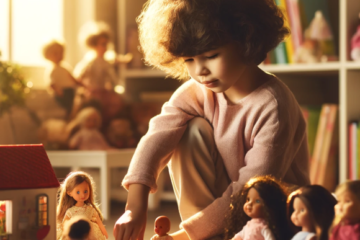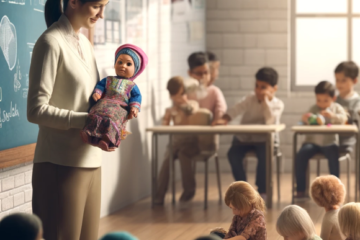In today’s world, where children are bombarded with images of perfection and glamour, the toys they play with can significantly influence their self-image and perceptions of beauty. One such toy that has been at the center of this discussion is the fashion doll, adorned with trendy clothes, makeup, and accessories. While these dolls may seem harmless, they carry significant implications for the self-esteem and self-worth of young minds.
Fashion dolls have long been a staple in the toy industry, captivating the imaginations of children with their stylish outfits and glamorous appearances. From Barbie to Bratz, these dolls often come with an array of accessories, including handbags, shoes, jewelry, and even makeup kits. While they may provide hours of entertainment, they also convey subtle yet powerful messages about beauty standards and societal expectations.
One of the most concerning implications of fashion dolls with accessories is their potential to reinforce narrow beauty ideals. With their flawless faces, slender bodies, and impeccable fashion sense, these dolls present an unrealistic standard of beauty that can be damaging to children’s self-esteem. When children play with these dolls, they may internalize the notion that beauty is synonymous with a particular look, leading to feelings of inadequacy or dissatisfaction with their own appearance.
Moreover, the emphasis on fashion and appearance promoted by these dolls can overshadow other qualities and talents that children possess. Instead of celebrating individuality and diversity, fashion dolls often perpetuate homogenized notions of beauty, where conformity to a certain aesthetic is valued above all else. This can limit children’s self-expression and creativity, as they may feel pressure to conform to societal norms rather than embracing their unique identities.
Additionally, the portrayal of fashion dolls in media and advertising further reinforces these beauty standards, creating a cycle of unrealistic expectations and dissatisfaction. Children are exposed to images of flawless beauty through television, movies, and social media, further shaping their perceptions of what is considered desirable or attractive. As a result, they may strive to emulate the impossible standards set by these dolls, leading to feelings of insecurity and low self-esteem.
However, it is essential to recognize that the impact of fashion dolls with accessories is not solely negative. When used mindfully, these toys can serve as valuable tools for teaching children about self-expression, creativity, and individuality. By encouraging open dialogue and critical thinking, parents and caregivers can help children develop a healthy relationship with beauty and fashion, emphasizing the importance of inner qualities and personal style.
Furthermore, the toy industry has made strides in recent years to promote diversity and inclusivity in doll representation. Companies have introduced dolls with a variety of body types, skin tones, and ethnicities, providing children with more options for representation and self-expression. By embracing diversity in doll design, toy manufacturers can play a vital role in fostering positive self-image and acceptance among children of all backgrounds.
In conclusion, the implications of fashion dolls with accessories for children’s self-image are complex and multifaceted. While these toys can perpetuate narrow beauty ideals and unrealistic standards, they also have the potential to promote creativity, self-expression, and inclusivity when approached thoughtfully. By encouraging critical thinking and embracing diversity, we can empower children to cultivate a positive self-image based on their unique qualities and talents, rather than conforming to external expectations.



0 Comments